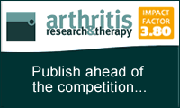“The current literature is not satisfactory to draw conclusions about the effectiveness of most complementary and alternative medicine in Raynaud’s phenomenon.”—Deane Malefant, BSc
“The current literature is not satisfactory to draw conclusions about the effectiveness of most complementary and alternative medicine in Raynaud’s phenomenon,” conclude researchers led by Deane Malefant, BSc, of the University of Western Ontario in London, Ontario, Canada. “There is a need for well-designed trials of complementary and alternative medicine in Raynaud’s phenomenon.”Acupuncture, antioxidants, biofeedback, lasers, gloves, supplements included in analysis
Researchers included 20 trials in their analysis—2 on acupuncture, 2 on antioxidants, 5 on biofeedback, 3 on essential fatty acids, 1 on gingko biloba, 3 on laser therapy, 1 on glucosaminoglycans, and 1 on therapeutic gloves. No meta-analyses were performed on categories with just 1 trial.
In general, the literature on the use of complementary and alternative medicine for Raynaud’s phenomenon was lacking. Many of these studies were published more than 18 years ago and were never confirmed by further research. In addition, the trial methodology was often not rigorous.
Biofeedback does not work in Raynaud's
Overall, biofeedback did not affect frequency, duration, and severity of Raynaud’s phenomenon attacks. What’s more, sham biofeedback was actually more effective than biofeedback. The therapeutic glove may actually improve Raynaud's phenomen, and laser therapy resulted in one less attack on average over 2 weeks when compared to sham laser treatment. None of the trials that looked at nutritional supplements showed positive effects on symptomology.
“The literature is inconclusive except that biofeedback does not work for Raynaud’s phenomenon, therapeutic gloves may improve Raynaud’s phenomenon, but results may not be generalizable due to single trial site and no intent-to-treat analysis and laser may be effective but the improvement may not be clinically relevant,” the researchers write.
Translating research into practice: complementary medicine and Raynaud’s phenomenon
Carolyn Dean, MD, ND, a naturopathic physician and author in City Island, NY, routinely prescribes certain naturopathic remedies to Raynaud’s patients. Treatment typically focuses on keeping the fingers warm and improving circulation in the hands, she said. “Always wear gloves in cold weather; swinging the arms like a windmill to force blood into the fingertips is helpful, [and] smoking is discouraged because it constricts the blood vessels.”
She tells patients to avoid alcohol because it creates heat loss. Coffee and caffeine products in over-the-counter pain medications, in chocolate, and cola drinks should be avoided because they also are vasoconstrictors.
References
1. Malefant D, Catton M, Pope JE. The efficacy of complementary and alternative medicine in the treatment of Raynaud’s phenomenon a literature review and meta-analysis. Rheumatology. 2009; [epub ahead of print May 11, 2009].






